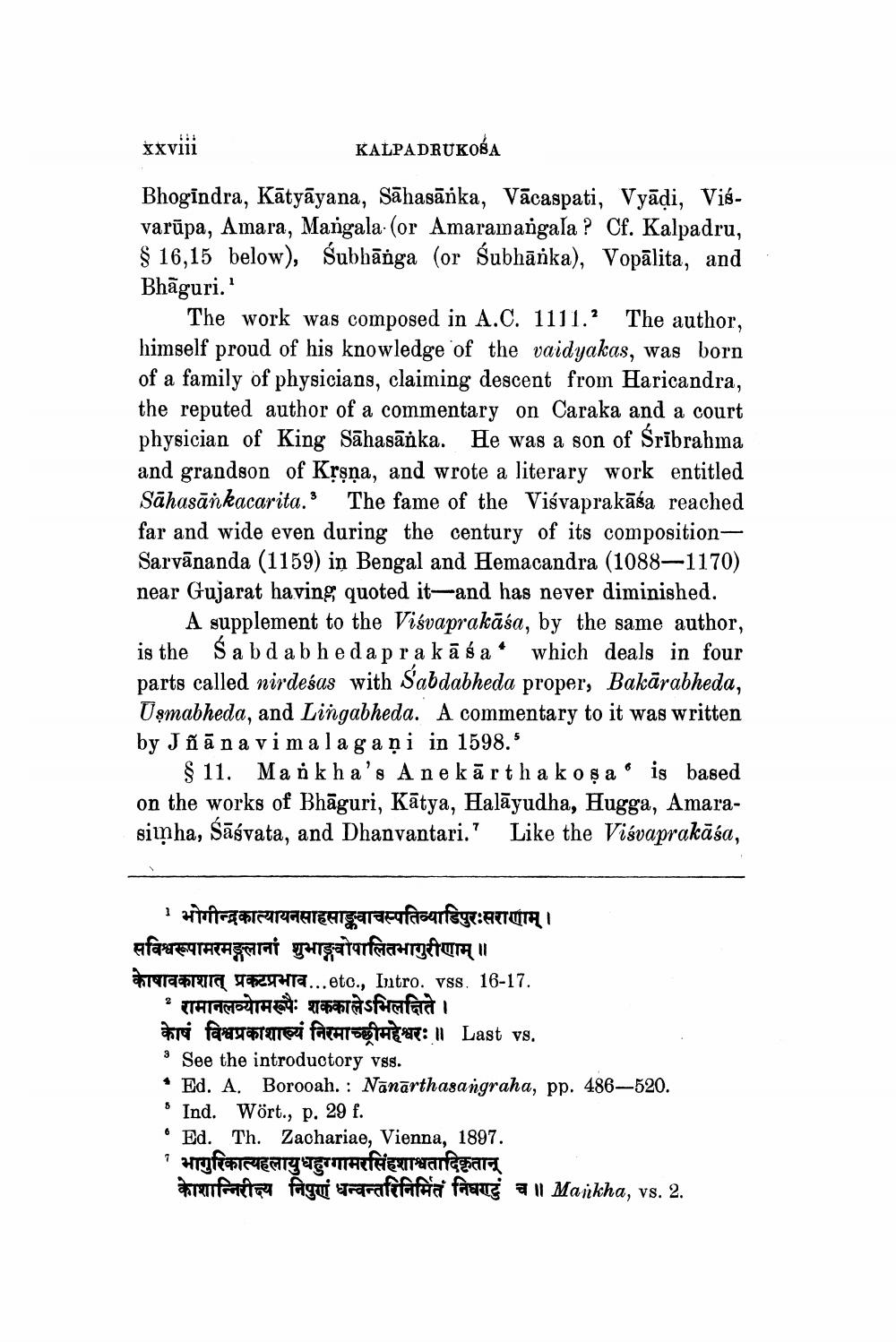________________
XXVIII
KALPADRUKOSA Bhogindra, Kātyāyana, Sāhasāňka, Vācaspati, Vyādi, Viévarūpa, Amara, Mangala (or Amaramangala ? Cf. Kalpadru, $ 16,15 below), śubhānga (or śubhānka), Vopālita, and Bhāguri.'
The work was composed in A.C. 1111. The author, himself proud of his knowledge of the vaidyakas, was born of a family of physicians, claiming descent from Haricandra, the reputed author of a commentary on Caraka and a court physician of King Sāhasāńka. He was a son of Śrībrahma and grandson of Krşņa, and wrote a literary work entitled Sāhasānkacarita. The fame of the Viśvaprakāśa reached far and wide even during the century of its compositionSarvānanda (1159) in Bengal and Hemacandra (1088—1170) near Gujarat having quoted it and has never diminished.
A supplement to the Visvaprakāśa, by the same author, is the $ ab d abheda pra kā sa * which deals in four parts called nirdeśas with Sabdabheda proper, Bakārabheda, Uşmabheda, and Lingabheda. A commentary to it was written by Jñāna vimala gani in 1598.5
$ 11. Man kha's Anekārth a koşa® is based on the works of Bhāguri, Kātya, Halāyudha, Hugga, Amarasiỉnha, śāśvata, and Dhanvantari.' Like the Visvaprakāśa,
__1 भोगीन्द्रकात्यायनसाहसाङ्कवाचस्पतिव्याडिपुरःसराणाम् । सविश्वरूपामरमङ्गलानां शुभाङ्गयोपालितभागुरीणाम् ॥ ateratung ARTHTA...etc., Intro. vss. 16-17.
* रामानलव्योमरूपैः शककालेऽभिलक्षिते। are farat Toi fata STATEATT: 11 Last vs. * See the introductory vss. * Ed. A. Borooah. : Nanarthasangraha, pp. 486-520.
Ind. Wört., p. 29 f. • Ed. Th. Zachariae, Vienna, 1897. ' भागुरिकात्यहलायुधहुग्गामरसिंहशाश्वतादिकृतान् are frontat fague Eyrarafefatta faaluga il Maikha, vs. 2.




